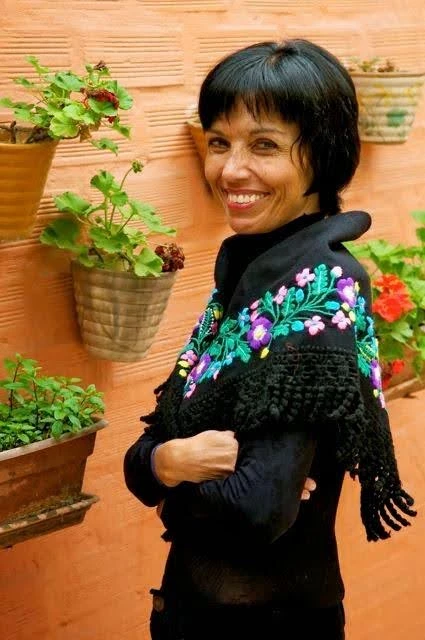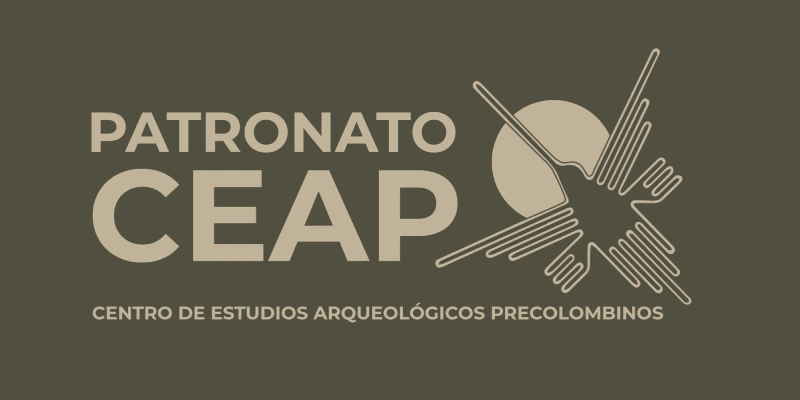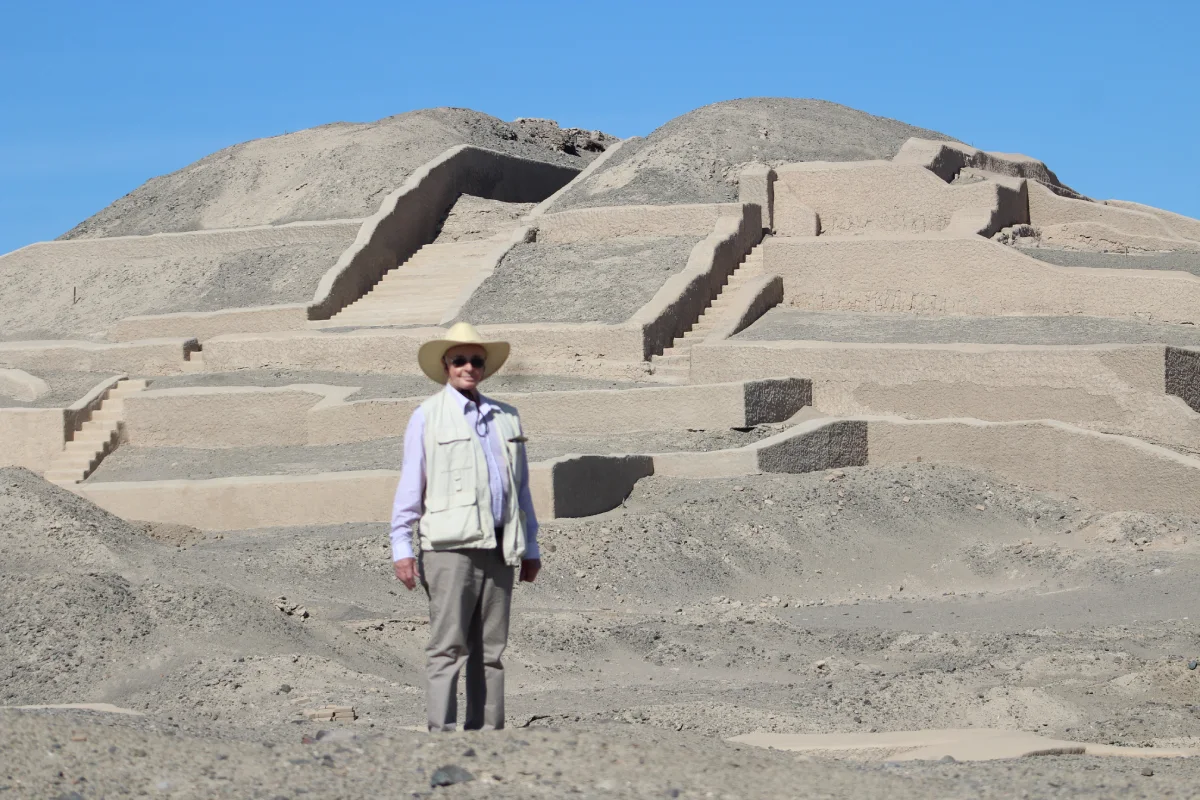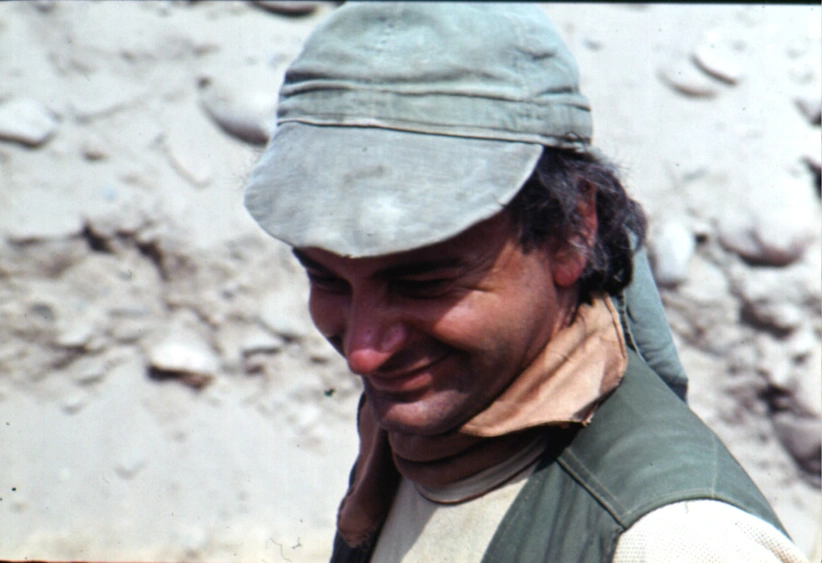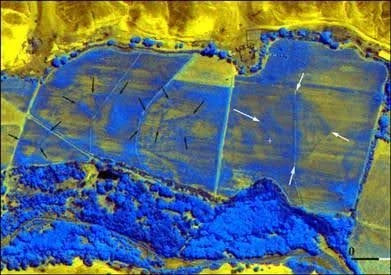The Beginnings of an Archaeological Adventure
In 1982, Ugo Ugolotti, owner of the GIULIA travel agency, introduced his friend, the Italian archaeologist Giuseppe Orefici. Ugo, who had spent his childhood in Nasca, knew the region’s tourism potential and had also witnessed the constant looting of its cemeteries and archaeological sites.
His love for the region led him to share with Giuseppe the need to protect that legacy and develop a project in the area. Thus began a story that would forever shape the archaeology of Nasca.
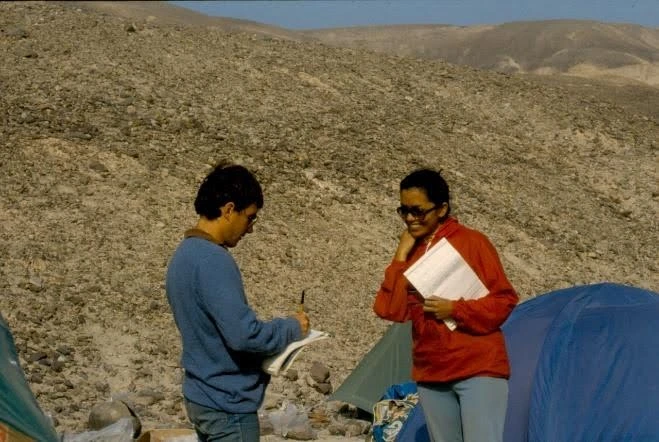
The Pioneer Team in Nasca
I was the first archaeology student from the National University of San Marcos to join this adventure. Our first expedition took us to Pueblo Viejo, an ancient Nasca village with dwellings and cemeteries.
The initial team consisted of Giuseppe, his wife Elvina, and a group of Italian scholars who, over time, became committed collaborators. I remember those nights guarding the camp, watching over the excavated tombs, lit by the moon and stars, and accompanied by a good pisco to ward off the cold.
Cahuachi: The Heart of the Nasca Culture
The excavations soon moved to Cahuachi, the great Nasca ceremonial center looted for centuries. With an inexhaustible vision, Giuseppe established agreements with universities in Italy, Poland, France, and other European institutions, attracting specialists in ethnobotany, archaeology, physical anthropology, architecture, restoration, and musicology.
The findings were remarkable: decorated walls nearly 30 meters high, painted textiles used as offerings, human and animal burials, botanical remains, ceramic antaras, and vessels containing traces of chicha. Each discovery provided new insight into the Nasca worldview.
International Outreach and Recognition
Giuseppe didn’t limit himself to excavations. He traveled across Europe promoting exhibitions about the treasures of Cahuachi. One of the most impressive was The Peoples of the Sun and the Moon, held at the Castello Sforzesco in Milan, which dazzled the city with exotic pieces and a memorable catalog that further consolidated the prestige of the Nasca culture.
From the Centro Italiano de Estudios e Investigaciones Arqueológicas Precolombinas (CISRAP) in Brescia, Orefici became a leading reference on Nasca culture in European universities and institutions. His tireless work culminated in 1999 with the opening of the Antonini Museum in Nasca, thanks to the support of Gabriella and Giorgio Antonini.
The Legacy of Giuseppe Orefici in Nasca
Since that year of 1982 until today, Giuseppe Orefici has lived pursuing a dream: to unravel the mysteries of ancient Nasca. His work is an indelible legacy for the people of Nasca, for those of us who collaborated with him, and for all visitors who marvel at this extraordinary civilization.
The desert wind continues to whisper the secrets of Nasca, and thanks to Orefici, we now have greater clarity about the greatness of its culture.
